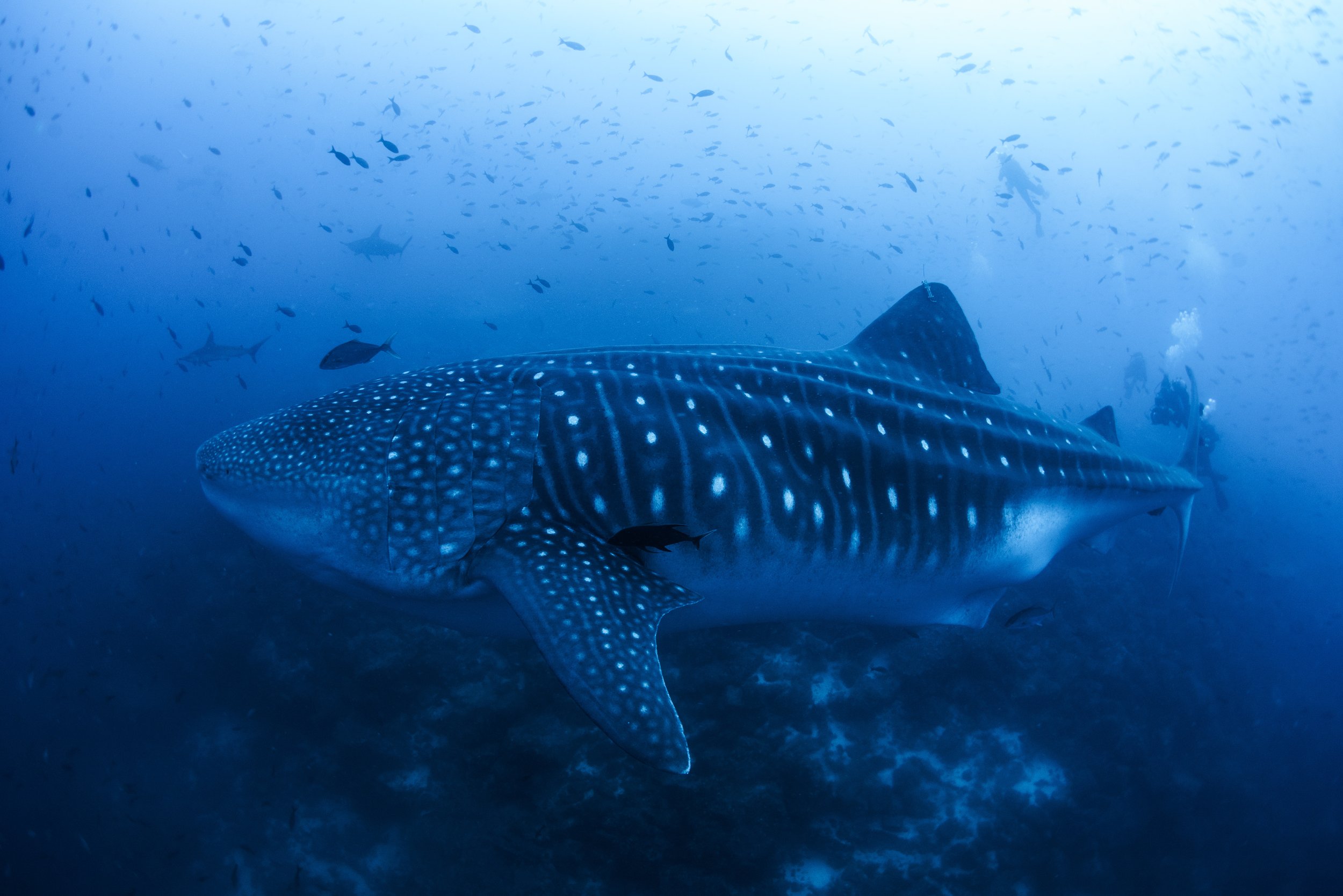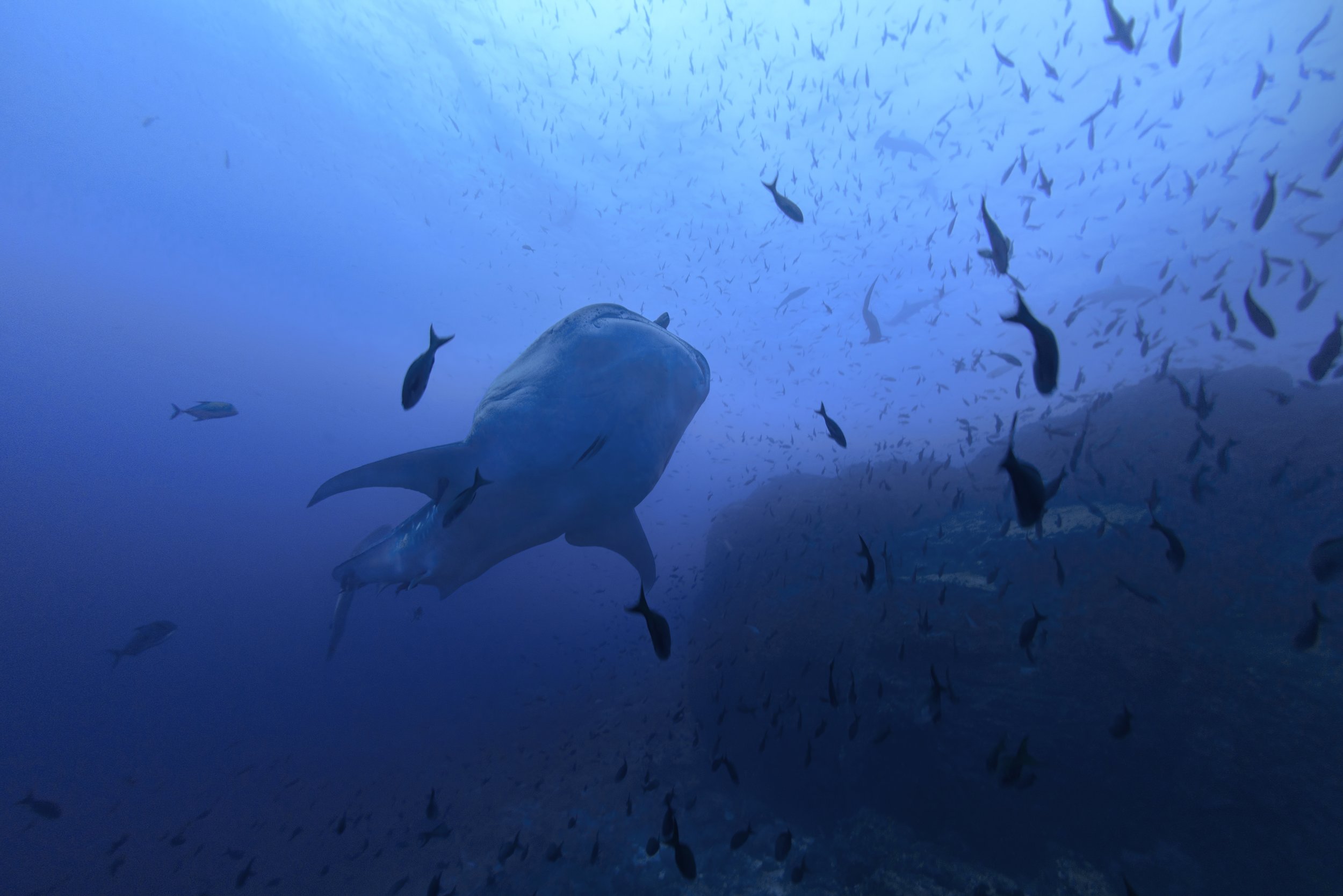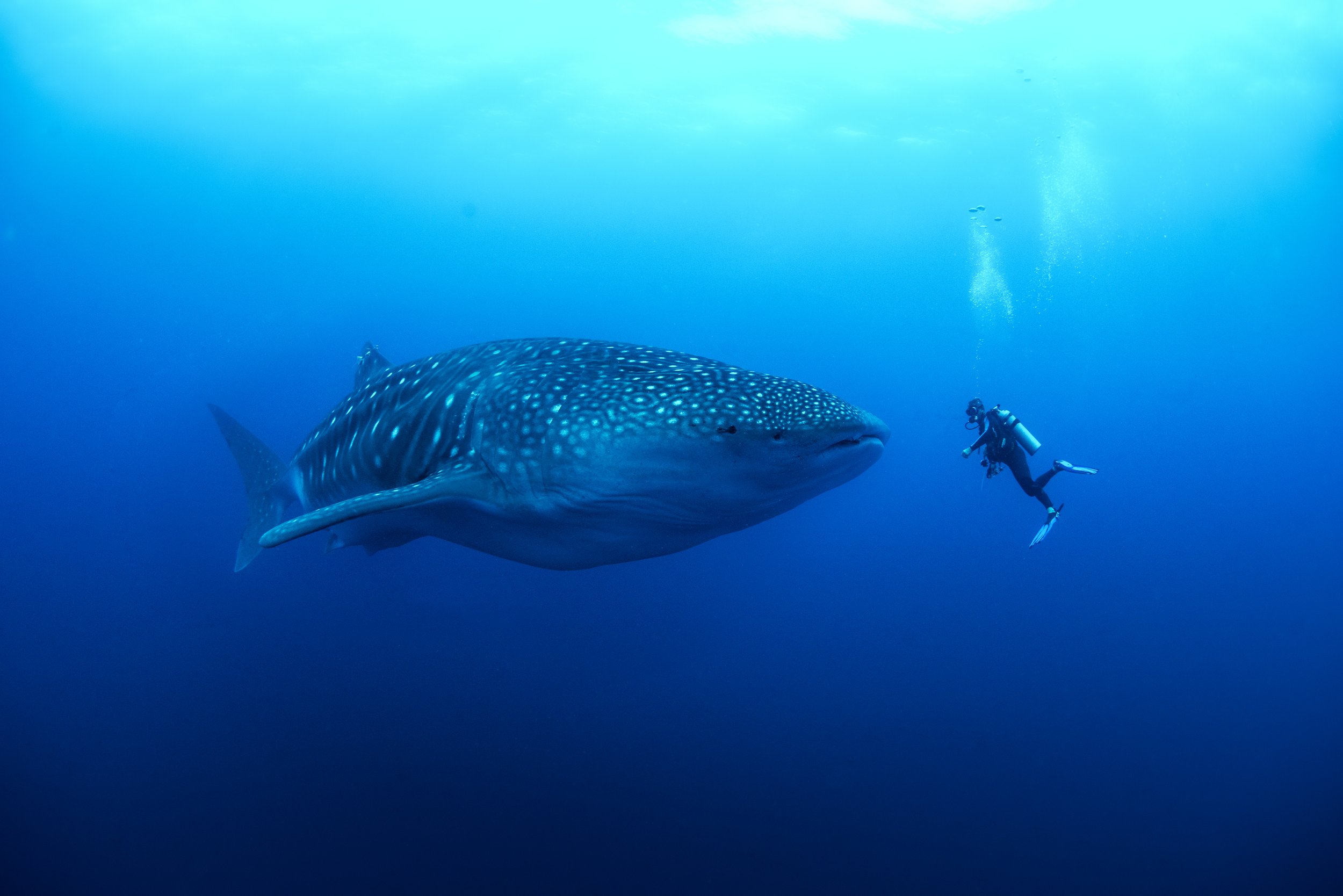
Global Whale Shark Program
The Galapagos Whale Shark Project
What’s this project about?
The Galapagos Whale Shark Project is a collaborative project focusing on whale sharks in the Galapagos archipelago, with MMF’s involvement focused on the northernmost island: Darwin.
This area is a global hotspot for adult whale sharks, almost all of which are females, providing a unique opportunity to learn more about their movement ecology and reproduction.
Key successes to date:
Identified over 700 individual whale sharks, primarily adult females.
Expanded the Galapagos Marine Reserve and created a protected swimway between the GMR and Cocos Island (Costa Rica) to help safeguard whale sharks and other migratory species from fishing.
Pioneered the first application of underwater ultrasound and blood sampling to study the reproductive biology of whale sharks in the wild.
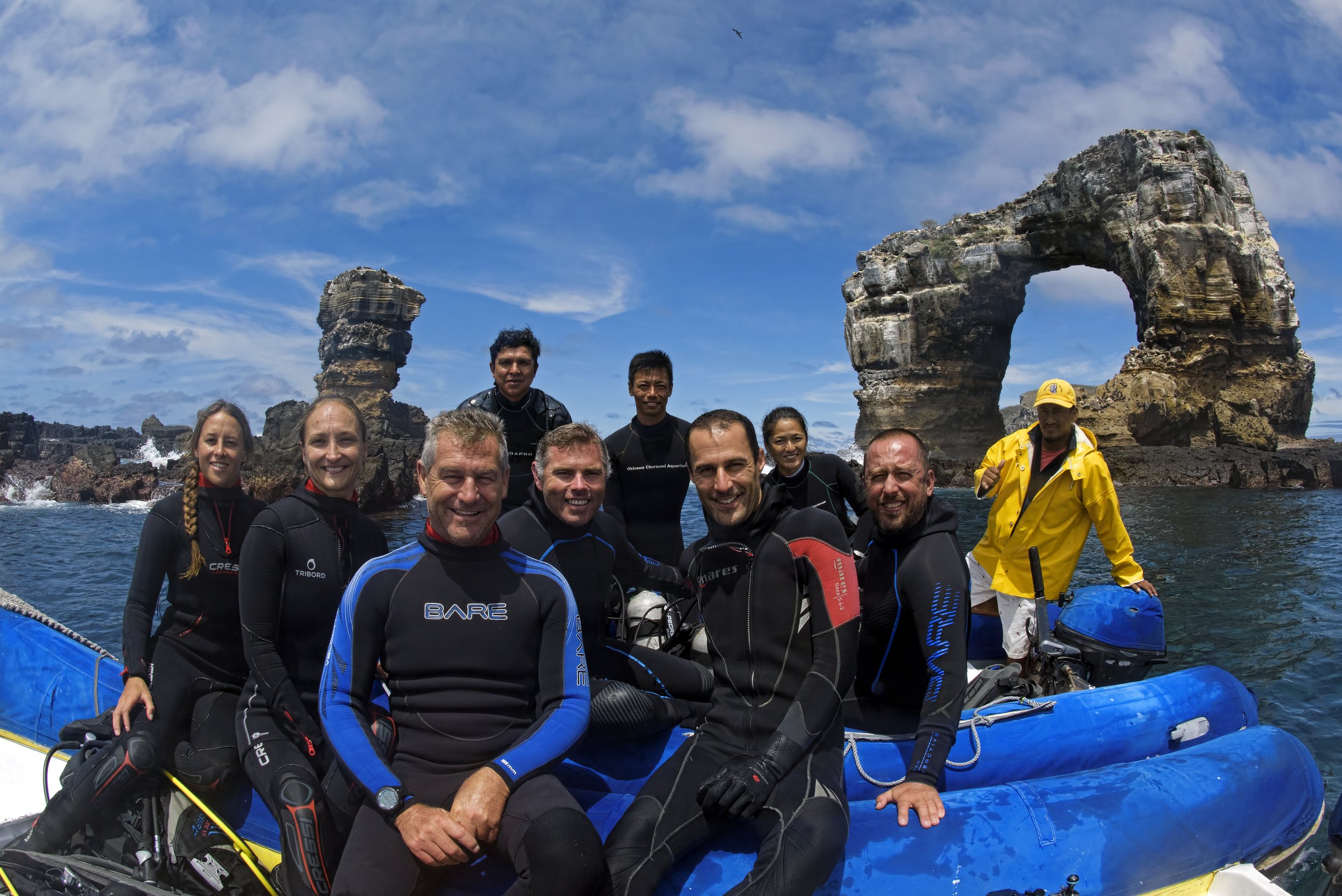
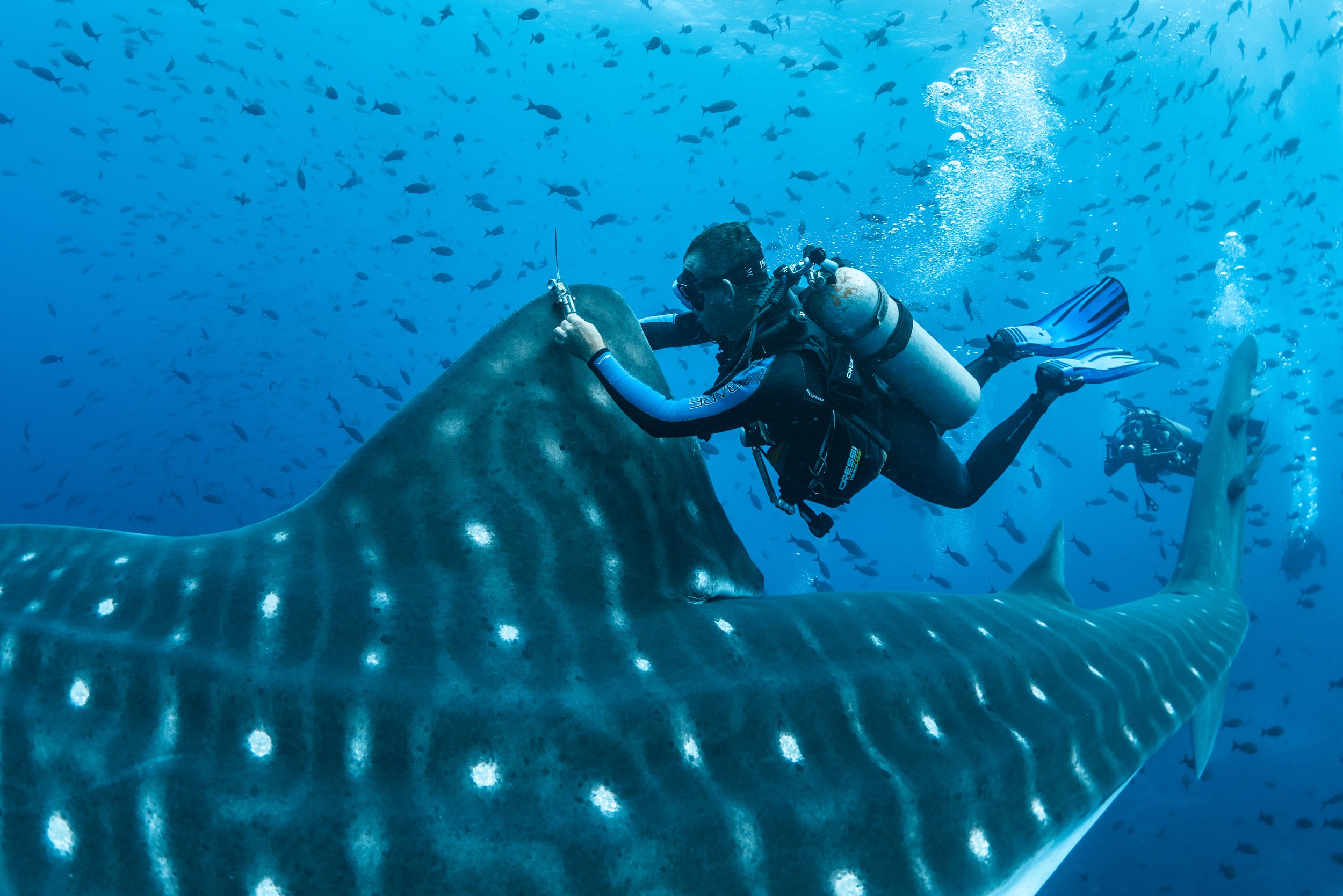
Watch
We conducted the first-ever ultrasound scans of wild whale sharks, collected blood samples and attached satellite transmitters to large female whale sharks to find out more about their reproduction & movements.
Project Overview.
Galapagos Whale Sharks.
The Galapagos Whale Shark Project includes population ecology, tracking, and health assessment, all aimed at understanding and protecting the whale sharks of the Eastern Pacific.
Population ecology
Photo-identification studies during dedicated research trips, bolstered by contributions from citizen scientists, have documented that Darwin Island has a large number of sharks transiting past from around June to October each year. Most are >10 m adult females.
Tagging and tracking
We have deployed a range of satellite-linked tags to study the long-distance migrations of the sharks after they pass by Darwin Island. Many are moving out into the productive waters of Intertropical Convergence Zone in the Eastern Tropical Pacific, flagging the importance of protecting this offshore habitat.
Reproductive & Health Assessment
Darwin is one of the only places where adult female whale sharks can reliably found, providing a great opportunity to learn more about their reproductive ecology. The Okinawa Aquarium team led a great project to do fieldwork with their underwater ultrasound system, allowing us to visualize the internal organs of these massive sharks for the first time. An ongoing project is collecting blood samples from free-swimming sharks to look at reproductive and stress hormones.

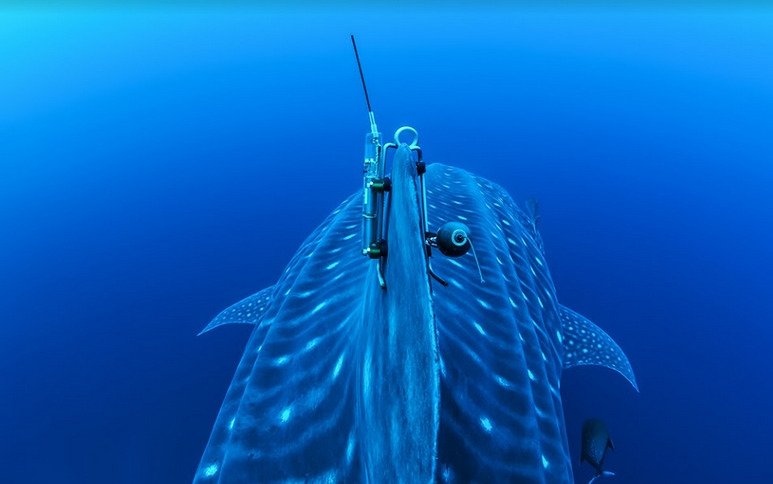
MMF Project Team
-

Dr Simon Pierce
CO-FOUNDER / PRINCIPAL SCIENTIST
Dr Simon Pierce is a pioneering researcher and global leader in whale shark conservation. Simon co-authored the first-ever scientific textbook on whale sharks in 2021, led the recent global conservation assessment of the species, and serves as a member of the IUCN Shark Specialist Group.
-

Dr Chris Rohner
PRINCIPAL SCIENTIST
Dr Chris Rohner completed his PhD on whale sharks in 2012, the first doctoral study on the species in Africa. Chris is an international expert in satellite tracking, population modeling, and shark ecology.
-

Dr Clare Prebble
SENIOR SCIENTIST
Dr Clare Prebble has pioneered the emerging field of biochemical ecology and its application to movement and feeding studies, completing her PhD on whale sharks in 2018.
-

Alex Watts
SCIENTIST
Alex Watts has a focus on spatial genetic mechanisms. She examines the demographic history, diversity, and connectivity of whale shark populations using genetic and genomic markers.
Media
New York Times. Tracking the Elusive Whale Shark
BBC. Galapagos marine reserve: Conservationists hail expansion
Guardian. The ocean’s largest mystery – why has no one seen a whale shark give birth?
ScienceNews. ‘Jet packs’ and ultrasounds could reveal secrets of pregnant whale sharks
FORBES. Galapagos Whale Sharks Undergo Ultrasounds For First Time
Scuba Diver Magazine. Galapagos Whale Shark Research
MONGABAY. Uterine implants and underwater ultrasounds aim to demystify shark births
DIVE Magazine. Whale shark reproductive ultrasound study published
SBS. First-ever whale shark examination complete in the Galapagos
OCEAN GIANTS Magazine. Whale Shark Ultrasounds, Issue #07
Scientific Publications
Underwater ultrasonography and blood sampling provide the first observations of reproductive biology in free-swimming whale sharks. Matsumoto R, Murakumo K, Nozu R, et al. Endangered Species Research.
Diving into the vertical dimension of elasmobranch movement ecology. Andrzejaczek S, Lucas TCD, Goodman MC, et al. Science Advances.
Improving sightings-derived residency estimation for whale shark aggregations: A novel metric applied to a global data set. Araujo G, Agustines A, Bach SS, et al. Frontiers in Marine Science.
Global collision-risk hotspots of marine traffic and the world’s largest fish, the whale shark. Womersley FC, Humphries NE, Queiroz N, et al. Proceedings of the National Academy of Sciences.
Global spatial risk assessment of sharks under the footprint of fisheries. Queiroz, N., Humphries, N.E., Couto, A. et al. Nature 572.
Undersea constellations: The global biology of an endangered marine megavertebrate further informed through citizen science. Norman BM, Holmberg JA, Arzoumanian Z, et al. BioScience. 67(12): 1029–1043.
